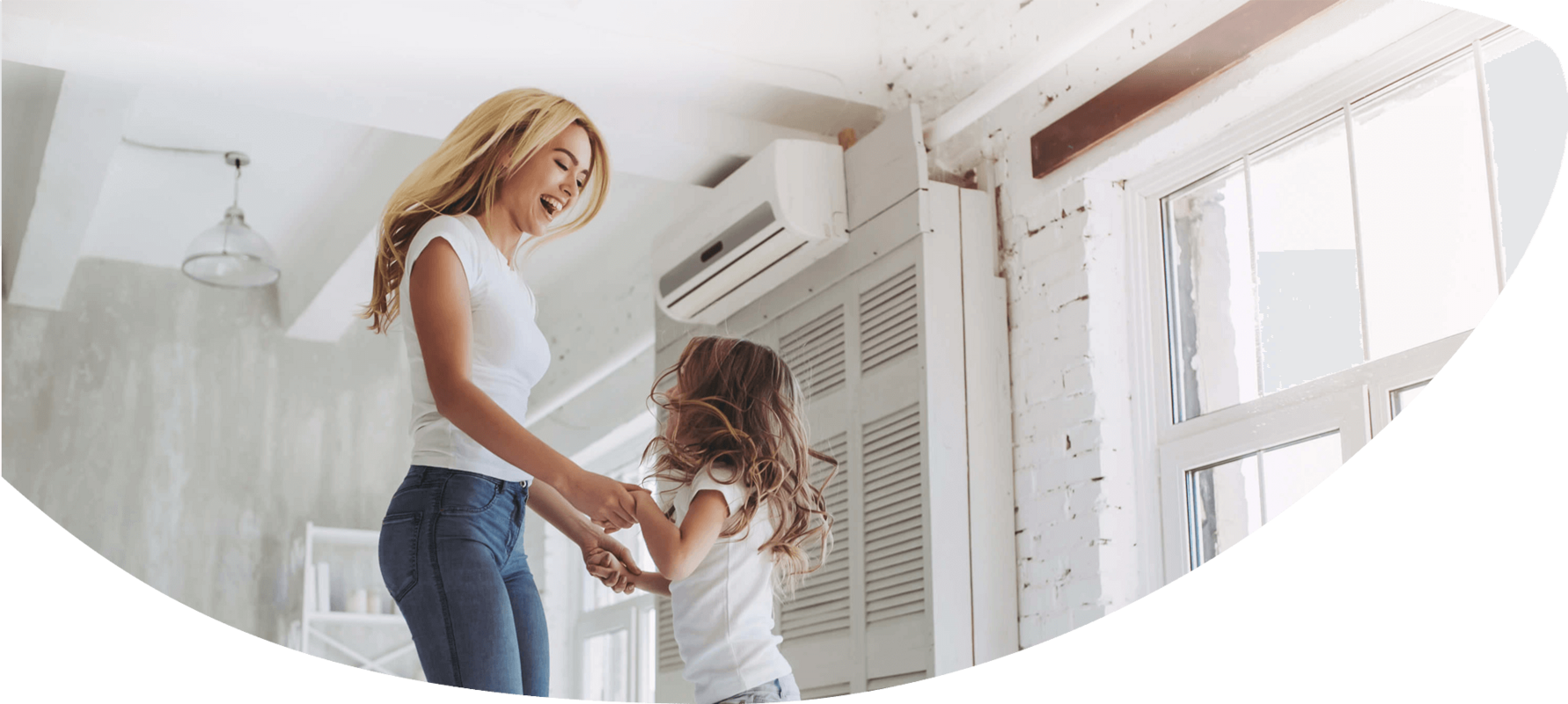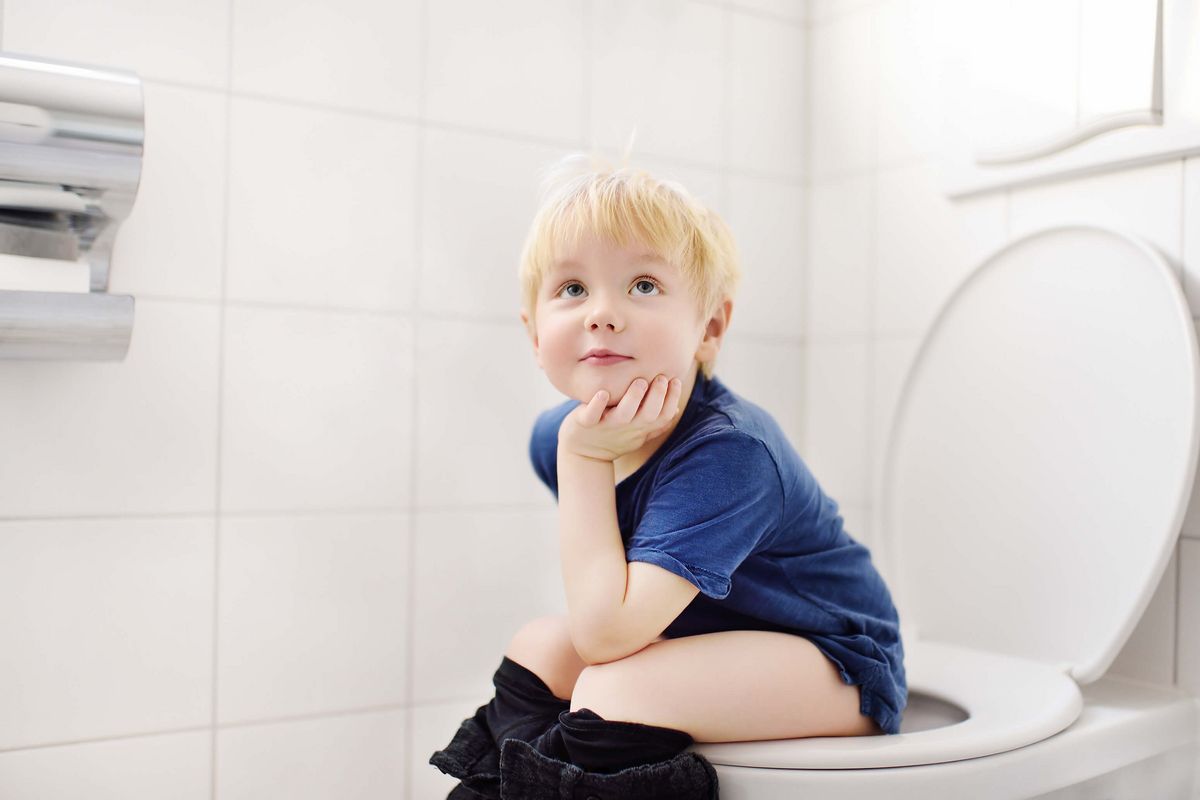Wetting in childhood
Children develop at different rates. This applies not only to walking and talking, but also to toilet training. Bladder control is a maturation and learning process that takes time and lasts until about the age of 5.

Child wetting
Not every child has completed this maturation process by this age. Various other influencing factors can also contribute to a delay in toilet training in children.
With child wetting, a distinction is made between night symptoms (bed-wetting, or medically: Nocturnal enuresis) and wetting during the day. Combinations also occur frequently.
Approximately 15% of all 5-year-old children suffer from night-time wetting, with boys about 2.5 times more frequently than girls. Urinary incontinence during the day occurs in 5% of children in this age group. About 15% of affected children recover spontaneously every year.
- in children over the age of three who wet themselves both at night and during the day,
- in children over the age of 5 who still wet at least twice a month,
- if, regardless of age, there is pain when urinating.
What is night-time wetting?
Exclusively night-time wetting during sleep at least two nights a month after the age of 5 is called 'bed-wetting' or 'nocturnal enuresis'.
In primary nocturnal enuresis, the child has never been dry, while secondary nocturnal enuresis describes renewed wetting after a dry period of at least 6 months.
The causes for night-time wetting are probably developmental delays in bladder control and regulation of urine production.
- the release of a hormone in the pituitary gland, ADH = antidiuretic hormone, is inadequate. As a result, urine production is not reduced at night.
- your child is not awakened by the stimulus of a full bladder, also as a result of delayed maturation of nerve pathways.
- bladder capacity is too low and the storage of urine is insufficient.
These disorders can be hereditary, but may also be influenced by social circumstances, such as defiance towards the parents, starting school, birth of siblings or divorce of the parents.
The following should not be underestimated improper drinking habits. If children drink too little during the day, they lack the important stimulus to develop the storage capacity of the urinary bladder appropriate to their age. The bladder remains too small. Children who drink large amounts in the early evening produce too much urine at night, which has to be excreted.
Very often, bed-wetting is accompanied by day-time symptoms that become visible only on closer inspection. Many children go to the toilet frequently during the day, which can be caused by small bladder capacity and the frequent urge to urinate. These children often attract attention with so-called holding manoeuvres, e.g., crossing their legs.
What is considered urinary incontinence during the day?
If your child wets during the day, there may be various causes. The most common is an overactive bladder. This is characterised by frequent urination with only small amounts of urine and an imperative urge to urinate. This may be indicated by holding manoeuvres (e.g., crossing the legs) to postpone urination.
With girls, it can happen that when they urinate, the pelvic floor cannot relax and so they do not empty their bladders completely.
- In the case of an overactive childhood bladder, bladder control is not yet fully developed. The bladder is emptied even when it is not full.
- Bladder emptying disorders can also be the cause of wetting. Either there is a narrowing of the urethra or the urethral outlet or a failure to urinate.
- Congenital neurological diseases or anatomical malformations can also be the cause of urinary incontinence.
Finally a confident child again.
My son, 6 years old, is a very bright boy. When cycling and playing football, he's constantly on the go. He also knows a lot about lizards and fish. Before going to sleep, we always read books about them together. But, for some time now, a certain tenseness has been creeping into our evening ritual – because my son sometimes wets himself at night.

Diagnosis: Wetting in childhood
The differentiation of bed-wetting from wetting during the day is the basis for successful treatment. To start with, the doctor asks questions about bladder emptying habits. In addition, some examinations are carried out which are neither painful nor stressful for the little patients. This so-called basic diagnosis can be performed by any doctor.
Every detail is important when you are asked about drinking and bladder emptying habits:
- When does the child wet and how often?
- Does the child go to the toilet frequently during the day, or rarely and then often too late?
- Is there frequently an urge to urinate, and is it imperative?
- Is the urine flow interrupted or even sputtering?
- How large are the individual urine volumes?
- Has anyone in the family had a similar problem?
The doctor can assess the symptoms with the help of a medical questionnaire (German).
After a physical examination and urinalysis, an ultrasound examination (sonography) of the urinary tract and a determination of the residual urine are performed, if necessary.
In every case, the doctor needs a so-called bladder diary (German). You should do this for 3 days and make a note of all actions related to drinking and urinating.
In most cases, all these examinations enable the doctor to determine whether it is pure bed-wetting, whether there is additional day-time symptomatology, or whether wetting occurs only during the day.
Further examinations beyond this basic diagnosis are only very rarely necessary. These may become necessary if the basic diagnosis provides indications of possible complicating factors, or if all therapeutic measures based on the basic diagnosis have been unsuccessful. These examinations are carried out by urologists or in specialised centres. Further examinations include urine flow measurement, bladder pressure measurement, further laboratory examinations and, possibly, additional examinations by other specialists.
Child Wetting
Children develop at different paces. This applies not only to running and speaking, but also to becoming dry. Bladder control is a maturation and learning process that takes time and lasts until about the age of 5.
First comes urotherapy
Many parents notice when keeping the bladder diary that their child not only has a problem at night, but also has to go to the toilet very frequently and urgently during the day. Or that the parents must always remind their child to go to the toilet.
In many cases, it helps just to pay attention to a few things and change behaviour patterns. You should therefore ensure that the majority of drinking takes place during the first half of the day and ensure regular toilet visits. In the evening, children should not drink caffeinated or carbonated beverages. And before sleeping, the bladder must be completely emptied in peace. The so-called 'coachman's seat' position helps to relax the pelvic floor muscles so that your child can completely empty their bladder. A child-friendly presentation of the processes in the body, the explanation of the individual problem and changing behaviour are also referred to as urotherapy. This should be prioritised before all treatment measures.
Stool regulation is also important. By eliminating constipation, bed-wetting can be successfully eliminated in over 50% of children.
With the 'coachman's seat' position, the feet are flat on the ground or a stool.
The legs are bent at 90 degrees. The upper body is bent forward slightly relaxed and the arms are supported on the thighs.
Show your child this relaxed sitting posture on the toilet and practise it a few times together.
Motivating the child is important
An important step in the treatment is to arouse the child's interest. The child must understand what the problem is and enjoy influencing their own bladder. Together with the child, decide on certain times at which the child is to empty their bladder at their own command. This toilet training enables the necessary exchange of information between the urinary bladder and the brain and promotes the maturation of the nerve pathways involved. The individual steps towards complete bladder control can be small, but should be recognised and rewarded.
Treatment of bed-wetting
Bed-wetting medications contain an active ingredient that is similar to the body's own anti-diuretic hormone and triggers the same reaction in the body. Urine production is reduced at night, the bladder can hold the amount of urine and there is no wetting. However, it is important that you seek detailed advice from your doctor and follow their instructions exactly. Only they can determine the dosage and when to end the therapy.
Alarm systems can also be used for bed-wetting. Bell trousers or mats react to moisture with an alarm and wake the child up so that he or she can still go to the toilet independently. This training method requires a lot of discipline and perseverance.
Treatment of urinary incontinence during the day
Medication of the child's overactive bladder with bladder antispasmodics improves the extensibility of the bladder muscle and thus increases bladder volume. The frequency with which your child feels the urge to urinate is also reduced. The duration of treatment varies greatly. Some children quickly achieve dryness, others need longer. It is important not to end the treatment abruptly when success has been achieved. Children must be continuously motivated and instructed so that they do not suffer a setback.
For children who have incorrect toilet habits (e.g., 'sputtering' urination), special devices (biofeedback devices) can be used to visually and acoustically illustrate the relaxation and tension of their pelvic floor muscles. The goal is for your child to learn how to consciously relax and tense their pelvic floor. Biofeedback training should take place over several weeks under the supervision of a specially trained physiotherapist.
Unfortunately, there are no precautionary or preventive measures for child wetting.
Behavioural change
In some cases, however, it is possible to prevent children from wetting themselves by changing their drinking and toilet behaviour. This change in behaviour – also known as urotherapy – should also precede any treatment in order to prevent unnecessary therapy measures:
- The majority of fluids should be drunk during the first half of the day.
- Ensure regular toilet visits.
- In the evening, children should not drink caffeinated or carbonated beverages.
- Before going to bed, the bladder should be completely emptied in peace.
- Make sure your child has regular bowel movements.
- In the so-called 'coachman's seat' position, your child can relax the pelvic floor muscles and completely empty the bladder.
Observing holding manoeuvres
By observing the child, you also can detect any disturbances in micturition and toilet behaviour, e.g., so-called 'holding manoeuvres'. Holding manoeuvres are attempts to suppress the urge to urinate. Children use these behaviours to prevent wetting, e.g., by pressing their legs together, hopping back and forth, squatting or sitting on their heels. If you observe such behaviour in your child, remind him or her to go to the toilet. Children often intentionally suppress the urge to urinate while playing or forget to go to the toilet because they are so absorbed.
APOGEPHA products for child wetting
Therapeutic products for the child's overactive bladder
For medication of the child's overactive bladder/urge incontinence, or neurogenic detrusor hyperactivity, so-called bladder antispasmodics are used. These calm the bladder muscles and increase the capacity of the bladder. The frequency with which your child feels the urge to urinate is also reduced.
Bladder antispasmodics are available on prescription only. It is therefore essential to consult a doctor before starting this treatment.
Therapeutic products for nocturnal enuresis
Medications for bed-wetting contain an active ingredient that resembles the body's own anti-diuretic hormone and triggers the same reaction in the body. Urine production is reduced at night so that the bladder can hold the urine at night.
The active substance is available on prescription only. It is therefore essential to consult a doctor before starting this treatment.
